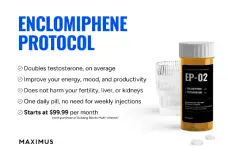To answer the question more generally it should be divided into two parts: What is high estradiol in an absolute sense? and What is high estradiol relative to testosterone? Starting with the absolute question, we can look at statistics for estradiol in normal men. We find that estradiol peaks at around 30 pg/mL at about age 30. The standard deviation is about 8 pg/mL. This gives a measure of how extreme it is to be at higher levels.
Above SDs
|
E2 Level (pg/mL)
|
Odds in normal population
|
2
|
> 46
|
1 in 44
|
3
|
> 54
|
1 in 741
|
4
|
> 62
|
1 in 31,574
|
5
|
> 70
|
1 in 3,488,556
|
By this measure it's getting to be quite unusual to have estradiol over 50 pg/mL in a normal population of healthy young men.
To consider whether estradiol is high relative to testosterone we can look at the weight ratios in plasma as a percent. I don't have a specific citation for this, but I doubt there'd be much disagreement that the normal range for E2/T in men is about 0.3-0.6%. If your aromatization rate is above this range then it's probably fair to say that your estradiol is relatively high compared to testosterone.
It's pretty well accepted that having high estradiol in a relative sense is problematic. For example, in susceptible individuals it may contribute to gynecomastia. It's less clear at this point if high absolute levels of estradiol are also a problem. There are not so many reports of acute issues, and we simply don't have the data to say if chronically high estradiol is harmful or not. Anyone running high levels long-term is participating in the experiment. In any case, those on TRT with high absolute estradiol have a simple solution that doesn't involve AIs: lower the dose to better emulate normal physiology.
















